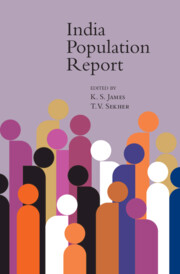11 - Localizing the Sustainable Development Goals
Measuring the Progress of the Sustainable Development Goals in the Districts of India
Published online by Cambridge University Press: 15 August 2023
Summary
Introduction
The Sustainable Development Goals (SDGs), comprising of 17 goals, 169 targets, and 232 indicators adopted by 193 nations in September 2015, provide a global framework for measuring developmental progress globally and nationally (United Nations, 2015). The SDGs are broad, comprehensive, complex, and time-bound goals (2016–30). Realizing the SDGs is a reflection of the global commitment to achieve improvement in the key areas of human and sustainable development, such as eradication of poverty and inequality and access to nutritious food, affordable healthcare, and clean energy through mutual collaboration and support (Menne et al., 2020; Sachs et al., 2016; Buse and Hawkes, 2015; Sachs, 2012; Singh, 2016). The progress on the SDGs is largely uneven and masks large variation across countries, within countries, across goals, and by socio-demographic characteristics (Lozano et al., 2018; Sachs et al., 2020).
In low- and middle-income countries, the national progress on the SDGs conceals large disparities at the sub-national level and among socio-economic groups (Dandona et al., 2017; Newton et al., 2015; Nomura et al., 2017; Panda and Mohanty, 2019). Thus, global and national efforts for localizing the SDGs have been recommended for efficient resource allocation and service delivery (Oosterhof, 2018; Patole, 2018; Xu et al., 2020). Many national and local governments have now been integrating the SDGs into their planning processes and using the SDGs as a management tool for policy (Avtar et al., 2019; Chen et al., 2019; Sachs, 2012). One of the key challenges in documenting such disparity is the unavailability of reliable data at the sub-national level. As the SDGs demand disaggregated information by geographies, getting reliable information is becoming more difficult (Dandona, Pandey, and Dandona, 2016; Oosterhof, 2018; Patole, 2018; Saikia and Kularni, 2017). Though these goals are ambitious in some aspects, monitoring the SDGs at the local level is also necessary.
The first systematic attempt to quantify the SDGs was made by the Sustainable Development Solution Network (SDSN) (Sachs et al., 2016). The 2016 edition of the SDG Index and Dashboards report was prepared for 149 countries using a set of 77 indicators (Sachs et al., 2017). Each country was ranked on an initial level using benchmark data of 2015 or period closure to 2015. Each of the indicators was standardized on a 0 to 1 scale, and the countries were ranked based on the SDG index.
- Type
- Chapter
- Information
- India Population Report , pp. 389 - 451Publisher: Cambridge University PressPrint publication year: 2024



